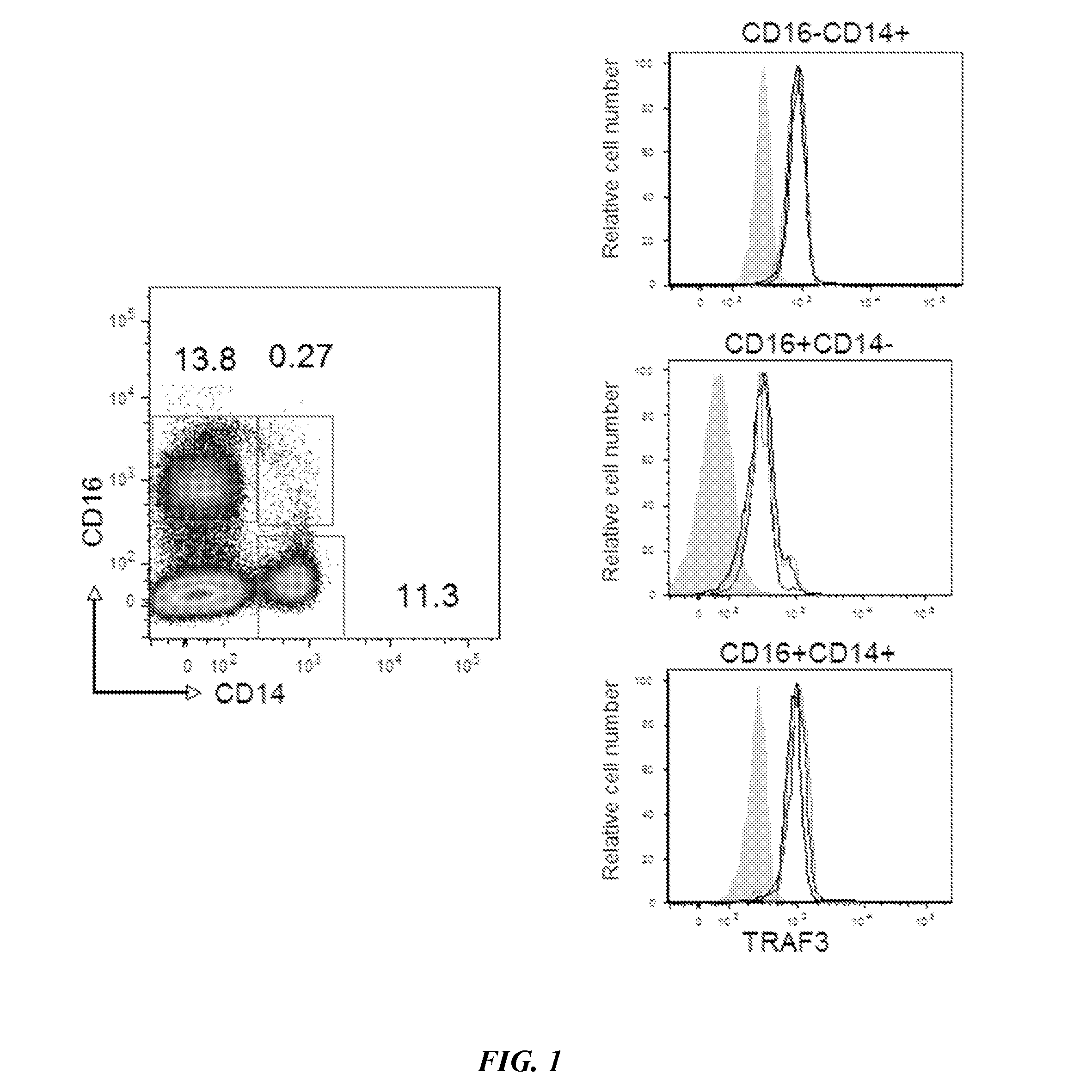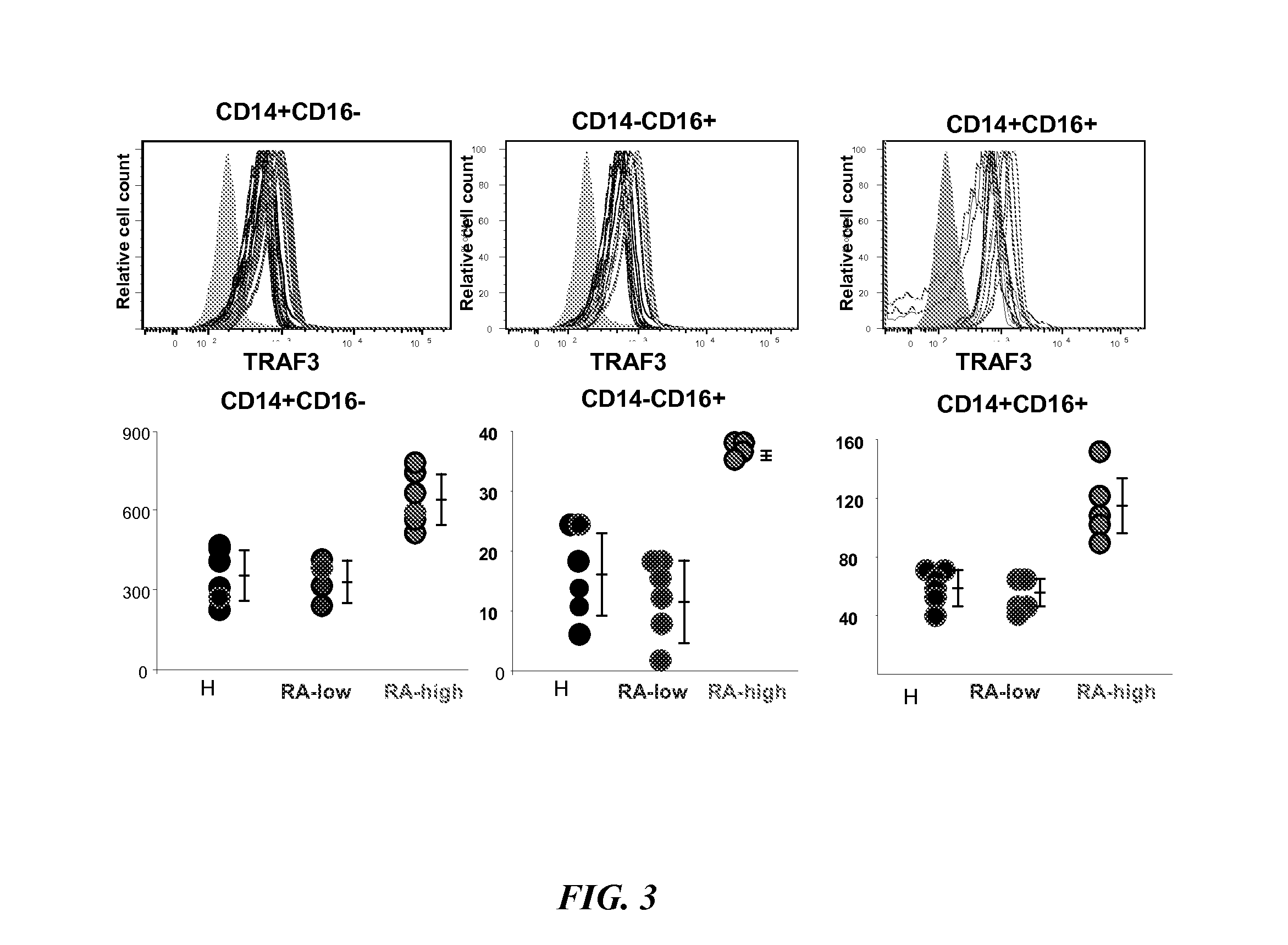Method to identify patients that will likely respond to Anti-tnf therapy
- Summary
- Abstract
- Description
- Claims
- Application Information
AI Technical Summary
Benefits of technology
Problems solved by technology
Method used
Image
Examples
example 1
Measurement of TRAF3 Levels in Peripheral Blood Monocytes (PBMCs) in Rheumatoid Arthritis Patients
[0059]TRAF3 expression levels were first assessed in PBMCs from 3 healthy subjects using FACS. The data showing TRAF3 fluorescence intensities in each sample are illustrated in the right hand panels of FIG. 1 in which each subject's data are illustrated by a blue, green or black line, and 3 populations of PBMCs are depicted as CD16−CD14+, CD16+CD14−, and CD16+CD14+. The left-hand panel shows the percentages of cells staining as CD16−CD14+ (11.3%), CD16+CD14− (13.8%), and CD16+CD14+ (0.27%). These data show that TRAF3 levels are similar in the 3 cell populations in all 3 subjects.
[0060]TRAF3 expression levels were then examined in PBMCs from 5 healthy controls and 10 patients with rheumatoid arthritis (RA). The data, illustrated in FIG. 2, show that some RA patients have elevated TRAF3 levels and some have values that overlap with those in the healthy controls. FIG. 3 illustrates these d...
example 2
Measurement of TRAF3 Levels in Peripheral Blood Monocytes (PBMCs) in Psoriatic Arthritis Patients
[0061]TRAF3 levels were next assessed in 10 patients with psoriatic arthritis (PsA). TRAF3 levels were elevated in the 3 PBMC populations in 6 of the subjects and were low in 4 subjects (FIG. 5), similar to the findings in the RA patients.
[0062]From these data, it is believed that TRAF3 levels will be increased in PBMCs from RA and PsA patients in response to increased levels of TNF in their blood and / or bone marrow, that high TRAF3 levels will predict a positive response to anti-TNF therapy, and that TRAF3 levels will decrease to or below the normal range in patients who respond to this treatment. It is also believed that, given these results with RA and PsA patients, the measurement of TRAF3 levels will accurately predict the efficacy of anti-TNFα therapy for patients having various immune disorders of the type described herein.
PUM
| Property | Measurement | Unit |
|---|---|---|
| Time | aaaaa | aaaaa |
| Fraction | aaaaa | aaaaa |
| Stiffness | aaaaa | aaaaa |
Abstract
Description
Claims
Application Information
 Login to View More
Login to View More - R&D
- Intellectual Property
- Life Sciences
- Materials
- Tech Scout
- Unparalleled Data Quality
- Higher Quality Content
- 60% Fewer Hallucinations
Browse by: Latest US Patents, China's latest patents, Technical Efficacy Thesaurus, Application Domain, Technology Topic, Popular Technical Reports.
© 2025 PatSnap. All rights reserved.Legal|Privacy policy|Modern Slavery Act Transparency Statement|Sitemap|About US| Contact US: help@patsnap.com



